Over 30 years ago Inge wrote her master thesis based on fieldwork in the Mondego Valley in Portugal. In the end of the 1970’s the Portuguese government designed a project for the Mondego Valley, to get hydro energy and to regulate the water for controlled irrigation.
The agricultural reforms were an important driver for the Mondego project, but also the construction of large hydro-infrastructural works for the energy-generation.
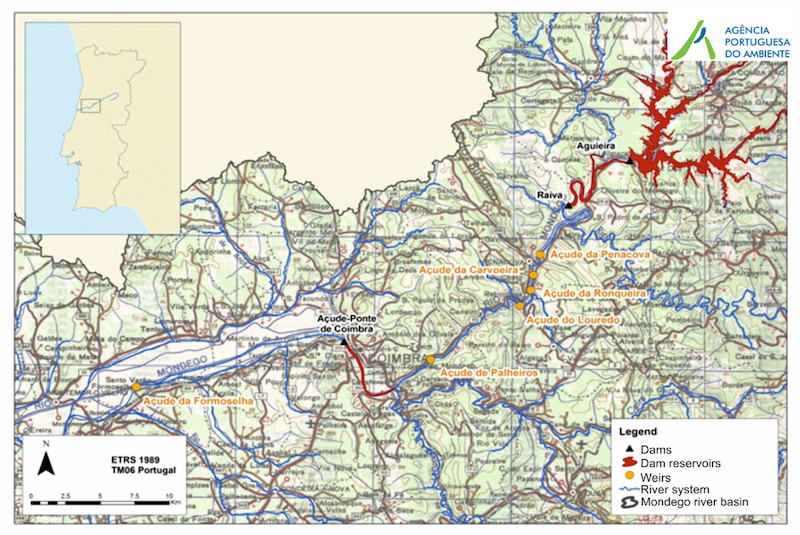
The project aim of controlling the flooding of the area and ensuring a new source of electricity succeeded much earlier than the land reform. Two mayor hydro-powerplants were built in the Mondego valley: the Aguieira hydro power plant, located in Aguieira, started operating in 1981. Its average annual production is 193 GWh. The Raiva hydroelectric power plant (1982) generates a yearly average of 44 GWh. All together almost 1% of the Portuguese energy consumption.
The agricultural reforms were made to be able to control to the irrigation and drainage of the area, to protect the area from the floods. Originally only rice could be grown. A controlled irrigation would make it possible to grow crops with a higher yield. This could make cultivating what agricultural soil Portugal has, more effective. Inge came in in the late ‘80s and started interviewing the farmers in Montemor-o-Velho. In 1989, the project had been delayed, which coincided with local resistance from the small farmers, and even sabotage of the works. The bigger and more entrepreneurial farmers from the association of farmers were enthusiastic about the project.
What happened in the 30 years in between the master thesis and 2020?
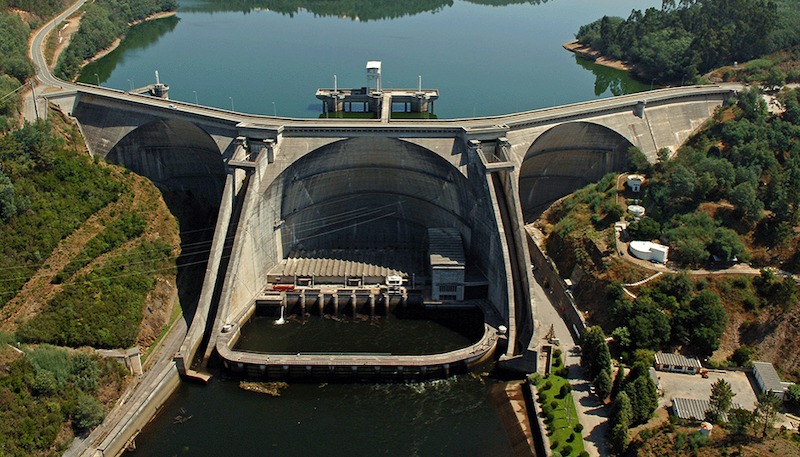
First, we went to see how the valley developed since then. The train from Figueira da Foz to Montemor-o-Velho took us through familiar looking small-scale villages and some abandoned farms. But further inland, we saw the image of the land reform unfold.
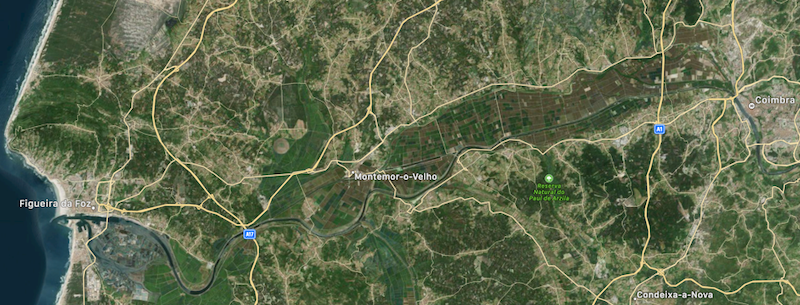
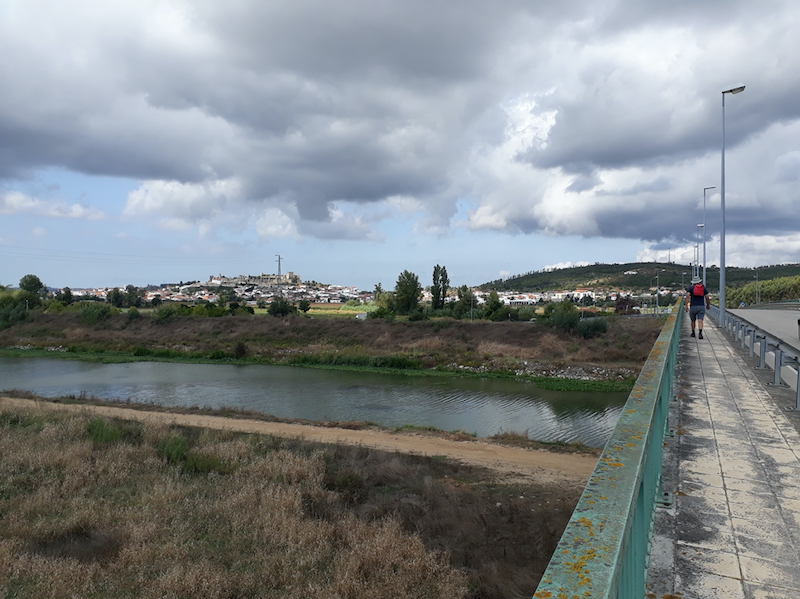
For a long time, the number of land owners stayed the same. In 2008 the number of parcels they owned had halved (so the parcels on average became twice as big). Rice (60%) and corn continue to dominate, with potatoes and other vegetables. It appears that this has been a key to success: The project adapted to small sized parcels and conciliated to predominant existing crops (rice, corn).
For the Mondego valley itself it seems to have been a success story even though it has cost lots of time and money. Estimates from 2008 on the total investment costs for about 5.500 ha (roughly 2/3 of the original project): almost 43 million Euros. And we see that the works on the adjacent rivers have suffered severe delays, much to the dismay of farmers in those regions.
Challenges
Rice growing is water consuming. The University of Coimbra and the research institute MARE carry out research on how to minimize the environmental impact of this crop while keeping the yield high. During the field work in ’89 we were welcomed with words we will never forget: You come all the way from the Netherlands to study our situation while we never ever saw those professors from Coimbra, only 30 kilometers from here”. So, this is a positive change.
On our 45 minutes’ walk from the train station to Montemor-o-Velho we walked along the endless corn fields. We then saw another potential challenge: How to grow crops without relying on large biochemical companies.
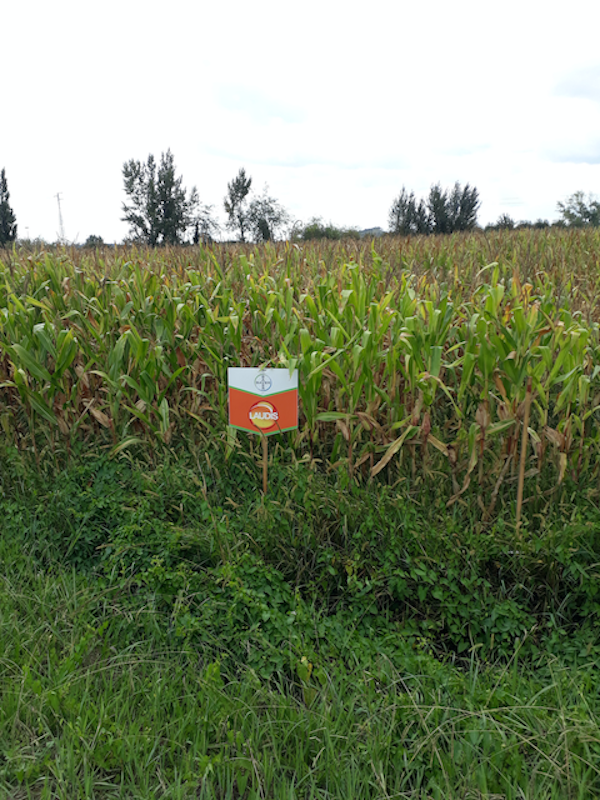
New developments
In recent years several groups in Portugal have protested against new mini-hydropower plants on the Mondego and other rivers. Environmental groups and other civil society organizations were able to stop two projects. In early 2016 the government decided that only four of the original seven dams will be built: the Girabolhos project on Mondego river was cancelled. Main reason for this was the incompatibility of the fish ladders built, and the broader changes they would bring, which included the expropriation of people’s houses. The construction of a fish pass in the Açude-Ponte dam in Coimbra represented the first step of the restoration process for the fish in Mondego river. It motivated further interventions in five of the smaller existing obstacles to promote successful fish passage. This is good news for sea lamprey and shad. These are gastronomic delicacies in this region and could help promoting the development of fishery, and generate incomes for local population and regional tourism activities.
In general, the organizations defend that no more dams should be built in Portugal and the cancellation of public subsidies for hydroelectric dam projects. Municipal leaders in municipalities near the dams, on the other hand, protested against the decision to reduce the number of dams, claiming that it will result in the loss of potential profits and benefits for local businesses. Also, the flooding of the valley could be controlled better by the dams, which in the light of climate change could be an important function of the dams as well.
Conclusion
Writing this blog, we realized that large-scale interventions bring benefits but often have adverse effects in other fields. The large dams hold the water and yield energy. But this leads to expropriation and potentially causes malnutrition for the underlying lands, hence the need for using fertilizers. Maintaining the system of irrigation and drainage is a complex task for a rural community. The large dams hinder the passage of fish, which makes other infrastructural projects necessary.
The approach chosen for reducing the environmental impact of rice growing looks hopeful: stay close to what happens on the land, use local knowledge and try to improve the situation together gradually.
Sources:
- https://ui.adsabs.harvard.edu/abs/2020EGUGA..2211924D/abstract
- http://www.rhpdm.uevora.pt/rivermondego.html
- https://www.semanticscholar.org/paper/Agricultural-development-in-the-Mondego-valley%2C-Dias-Jose/e7f25d6a4bb169102c72507773db3df636fd23c6
- http://www.fao.org/fileadmin/user_upload/reu/europe/documents/LANDNET/2008/Ambar.pdf
Van de Gruiter sponsors Fossil Free Around the World
 Van de Gruiter , the specialist on rigging and sailing gear for the watersport, is sponsoring the Fossil Free Around the World project. Van de Gruiter already sponsored the Sustainable Yacht project before, with the complete running rig.
Van de Gruiter , the specialist on rigging and sailing gear for the watersport, is sponsoring the Fossil Free Around the World project. Van de Gruiter already sponsored the Sustainable Yacht project before, with the complete running rig.
Did you know that the running rig, the halyards and sheets and block and tackles on the Ya, already last for over 37.000 miles these last 6 years? This is quality, this is the sustainability that Van de Gruiter brings in.
